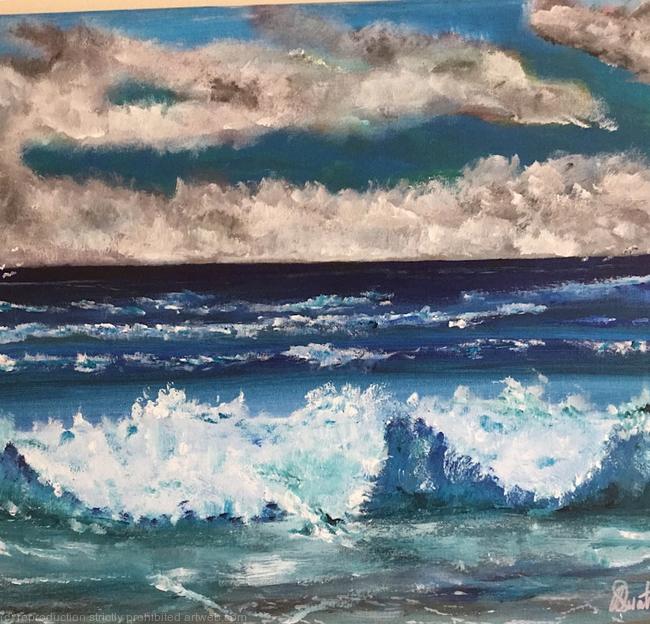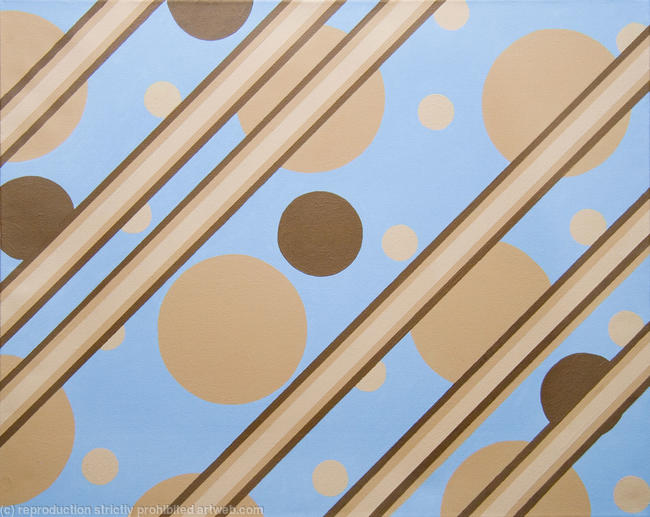Acrylic is the painting medium that many of those who casually dabble in the discipline are most familiar with, and there are some very good reasons for this.
Alongside watercolour painting, acrylics are among the dazzlingly simplest paints to use, with hardly any preparation required compared to some of the alternatives. Provided that you have a few tubes of acrylic paint in your possession, together with some brushes, a palette and water, you are in a position to get started with acrylic painting.
However, it isn’t necessarily the minimal equipment needed that is the main factor behind acrylics being so renowned for their ease of use. Instead, it’s the sheer simplicity of the process of using such paints that helps to make them enjoyable for those of almost any and every level of confidence, skill and experience in painting.

A medium that works well with nearly any other
While the novice-friendliness of acrylic painting is certainly one thing to commend it, when you’re seeking a discipline that is ‘easy to get to grips with, but difficult to master’, acrylic can rank highly in this regard, too.
This is not least the case because it appears to work so well with nearly all other conventional media, such as drawing, coloured inks or gouache – in short, basically any medium that doesn’t contain oil.
Furthermore, the list of standard equipment that you’ll need just to get started with acrylics may be short – unlike the situation with oils – but that doesn’t mean there isn’t a lot more equipment to which you can turn to expand the scope of your acrylic painting practice, when and if you feel the need for it. As you gain ever-greater experience with acrylic painting, you will gain the confidence to add and subtract items from your repertoire.
So, what really is acrylic paint?
Acrylic paint is created through the mixing of powdered pigment with acrylic adhesive. While the adhesive has a milky appearance when wet, it becomes transparent as it dries, thereby showing the true colour of the pigment.
Pigment, meanwhile, is the ingredient that acrylic paint shares with all other types of paint. Pigments are the colouring materials that make up paint, usually being created in the form of powders.
The manufacturing process of acrylic entails these two ingredients being mixed and then milled between steel rollers, followed by inspection and the paint being put into tubes. But the process is not as simple as it may sound, instead being characterised by the most fastidious precision and control as ingredients are carefully weighed and tested.
It is such a painstaking approach that enables the manufacture of huge numbers of tubes of paint of unerringly consistent colour, consistency and quality, thereby helping to make acrylic painting one of the mainstream ‘stars’ of art practice.

Other basics to be aware of before painting
One of the other big advantages of acrylics is the speed at which they dry, which brings us onto another important matter if you are to get the most out of your acrylic painting: that of achieving the right layers in your painting.
When you look at a painting, you may only be seeing one or more of its higher layers. A complete acrylic painting may comprise as many as 10 layers, starting – from the bottom – with the support such as paper, card, canvas or hardboard. To this is added the primer, which is likely to be gesso or acrylic white.
The other layers of a typical acrylic painting may include the likes of a wash or toned drawing, an underpainting that thinly blocks in the main areas of colour, a middle layer, impasto, glaze and varnish. You may only need to use a few of these layers in your next acrylic painting; nonetheless, it is vital that any painter knows about them.
It is essential, too, to consider what media you may use to make your acrylic paint flow better or to achieve different finishes. The most crucial of these will always be water, which is invaluable for not only thinning the paint, but also cleaning brushes and palettes. While it may not be technically impossible to paint in acrylics without water, you will find attempting to do so extremely difficult.
What are your own thoughts on acrylic painting, and what would you advise beginner and experienced acrylic painters alike to be mindful of? The comments section below is open for your feedback.






